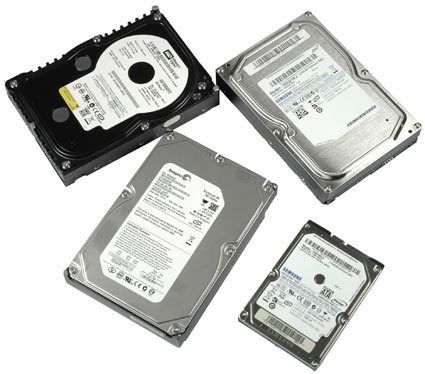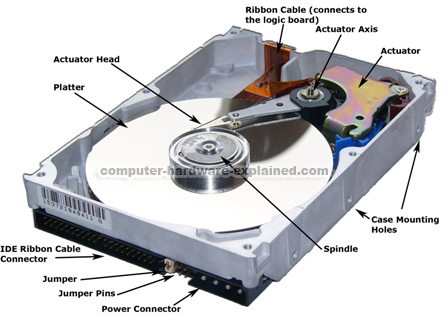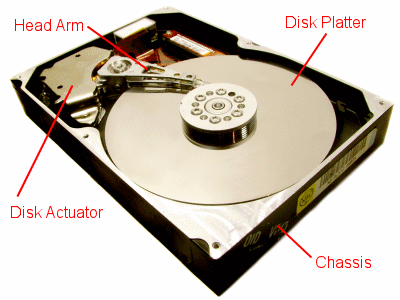

- #Power on time hard drive mac os x
- #Power on time hard drive software
- #Power on time hard drive mac
- #Power on time hard drive windows
Earlier we agreed that if there are obvious physical signs of damage then we need not fiddle further, there’s definitely a problem. Or the other, more serious, problem of a faulty hard drive itself.
#Power on time hard drive software
What we mean here is determining whether the hard drive itself is still working correctly as a storage device, but the software side of things is at fault. Next up is to determine if the fault is on a software or hardware level. OK, there’s a problem somewhere, what next?Īt this point we’ve established that there is indeed a problem with accessing your data, nothing that a simple reboot can fix. If the hard drive in question is missing from that list, or the drive is visible but the partition is showing up as unallocated, there’s a good chance that you’ll need to move onto the next step of this article which investigates determining the fault with the hard drive.
#Power on time hard drive windows
Below is an example of Windows Disk Management showing the bootable 500GB C: drive, a secondary 250GB E: drive and empty D: drive optical drive. This will give you a list of storage devices connected to your computer, separating them into devices and storage volumes. From within Windows you can have a closer look at your hard drives by right-clicking My Computer, selecting Manage and the choosing Disk Management. If a hard drive is visible in the BIOS it doesn’t necessarily mean it’s working correctly. Here’s an example of what to expect to see, with all of your working hard drives listed. Some typical keys to push on startup to get you into the BIOS are F2, F12 or delete. If you want to use this method you can also go into the BIOS itself and check which drives are visible. If quick boot is enabled it’s unlikely you’ll have a chance to see what drives are available. BIOS systems have changed a lot over the years and you may or may not be presented with a list of hard drives depending on how your BIOS has been configured.

The first is through the BIOS screen when you switch your computer on. With a Windows computer you have two different methods of checking whether or not your hard drive is accessible.
#Power on time hard drive mac
If you’ve come to the conclusion that the hard drive you use with your Mac is faulty, it’s time to determine what’s wrong with it… once we’ve covered the Windows angle of course. Whether you can see the volume and you get errors when trying to repair it, or you cannot see the hard drive listed at all, you know you have hard drive problems. You can try to verify or repair the disk permissions, but if your hard drive has issues you’ll like get red error messages like in the example below. This means that the volume is not mounted and you cannot access the data.

If you’re not seeing your hard drive on the desktop then there’s a good chance it’s either not showing here at all, or the hard drive is listed yet the volume name is greyed out. Below each hard drive you should see the data volume with its name, in this example Gigantor and Time Machine. When it’s opened up you should expect to see all of your attached disks, similar to this example below where we see a 240GB SSD boot drive, a 2TB and 3TB hard drive along with the SuperDrive. Click on the spotlight search icon on the top right of your screen and search for Disk Utility to launch it.
#Power on time hard drive mac os x
In Mac OS X you can use the Disk Utility to check the basics. We will need to break this down into Mac and Windows variants as the test for each is different. Let’s skip these obvious signs and move to the examples where everything seems normal, but your drive or data isn’t available. Hearing clicking noises, seeing or not seeing indicator lights that you aren’t used to, smelling smoke, these are all signs that there’s something wrong with your hard drive. If you hear, see or smell anything out of the ordinary then it’s quite obvious to assume there is a hardware problem. The main reason you would question your hard drive’s integrity would be because you cannot see or access your hard drive, or certain data stored on it. Is my hard drive failing? Is there even a problem with it?įirst things first, let’s establish whether your hard drive is even faulty. Let’s investigate hard drive failures in terms of identifying them, the causes and possible solutions.

There are, however, some instances where you can raise your hard drive from the dead. For the most part the answer is no as when a hard drive fails it’s often to a degree that it can’t be repaired. When a hard drive fails the first question people often ask is can it be fixed? This isn’t a straightforward question to answer as it depends on which component of the hard drive has actually failed.


 0 kommentar(er)
0 kommentar(er)
